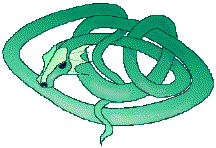

As the ancient festival of Samhain was held in honour of the Sun God's death and transition to the dark lands of Under wave where he then resides as Lord of Death, this is the time that the old Celtic peoples came to terms with death and pondered on their own meeting with the Dark Lord. Like all other pre-Christian peoples they had customs surrounding this inevitable part of life. Some of these Celtic customs and burial rites still can be seen today in Christianized forms, while others may seem strange to our times.
Many superstitions and taboos that are still held today in Celtic parts of the country surrounding the deceased have their origins far back in Pagan times. One example of this is the custom of burning candles day and night until the funeral harks back to the belief that the demons of the darkness could be held at bay by the power and light of fire. In Pagan times the dead were washed using water from a sacred well or by sea water to protect them while passing through the realms of water to the land under wave (Tir-fo-Thonn).
When washed the corpse was wrapped in the Eslene (Death Shirt) and laid on a fuat or bier in the centre of the home for seven days. Rush torches were kept burning for seven days and nights. The rites would begin by the traditional practise of "Caoine" (pronounced Keena, the anglicised word became keening). This would take the form of great lamentation interspersed by periods of praise for the dead person. After three days of Caoine and dependant on the status of the deceased, feasting and games would be held in their honour, the corpse having a bowl placed on their chest filled with food, and gold and weapons etc. were laid out on the bier. This would continue till the day of internment or cremation in some places.
Under Brehon Law there existed the "rights of the corpse", this law stated that certain personal possessions belonged to the dead and could not be taken from them under any circumstances, even as a debt owed. These items were a horse, a cow, a bed, a house or its furniture. (Considering modern law on this matter how can we call these people Barbaric?) These items would be retained by next of kin.
On the morning of burial a visitor came bearing a measuring rod called a "fey". This rod, made of Aspen and carved with Ogham letters and symbols, was used to measure the deceased to ensure a proper fit within the final resting place. The mourners would avert their eyes from this rod in awe and terror, it was thought that if this rod caught your measure your death was inevitable. Finally at the setting of the sun on the seventh day the corpse would be carried by seven men or a chariot if of noble status and buried or burned depending on tribal custom.
[© Dalriada Celtic Heritage Trust]
[Author S. McSkimming DALRIADA MAGAZINE 1992]
 Back To ~Celtic Crossings~
Back To ~Celtic Crossings~
